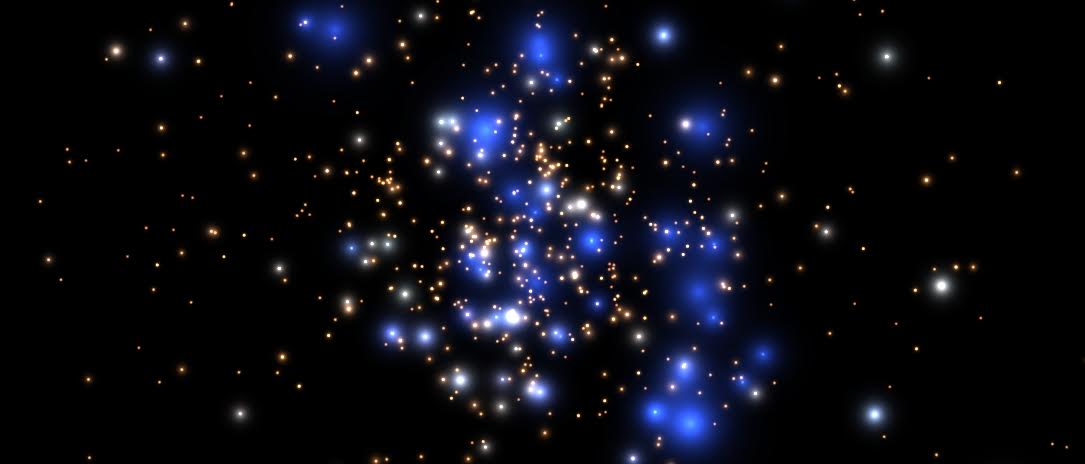Exploring Sources of Gravitational Waves from Star Cluster Dynamics
Joshua Fuhrman, Aaron Geller, Carl Rodriguez, Fred Rasio
.
| Abstract | The N-Body Problem | Star Cluster Evolution & BBH Formation | Results | Contact |
The recent detection of ripples in space-time by the Laser Interferometer Gravitational-wave Observatory (LIGO) has ushered in the age of gravitational wave astronomy. Binary black hole systems formed in the center of modest star clusters offer a possible gravitational wave source detectable by the LIGO or Laser Interferometer Space Antennae (LISA) collaborations. We simulate clusters containing 1-40K objects using direct integration from a customized version of NBODY6++GPU. We identify Binary Black Hole (BBH) objects of interest by an inspiral time sufficiently less than the age of the universe such that their coalescence might be detectable. Such objects are tracked through time within our N-body simulations to characterize the role of dynamics in the evolution of the BBH system using member exchanges and large orbital eccentricity changes as indicators of dynamic's influence. We produce 41 BBH system candidates for detection by LIGO, all of which are dynamically formed. We observe several trends in the production of these potential BBH LIGO sources: a low-N cutoff in initial cluster size between 1-5K objects, high eccentricity oscillations, and the frequent formation of stable triple systems with the BBH as the inner binary.

Image Courtesy of Aaron Geller
. Joshua Fuhrman
. Northwestern REU Student 2016
. Carnegie Mellon University
. jfuhrman@andrew.cmu.edu